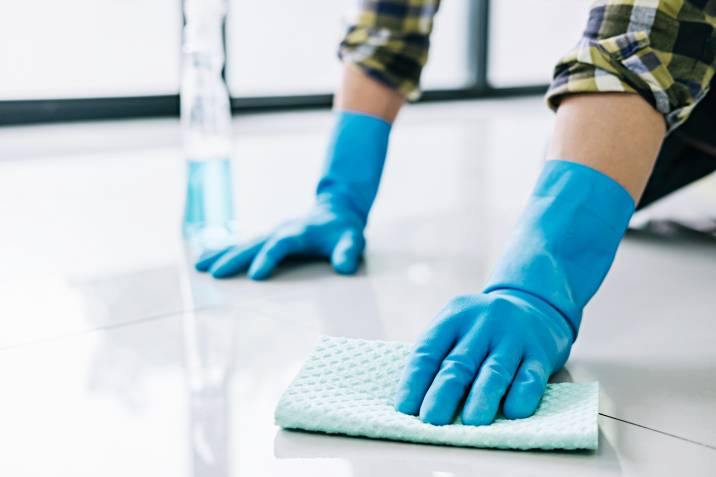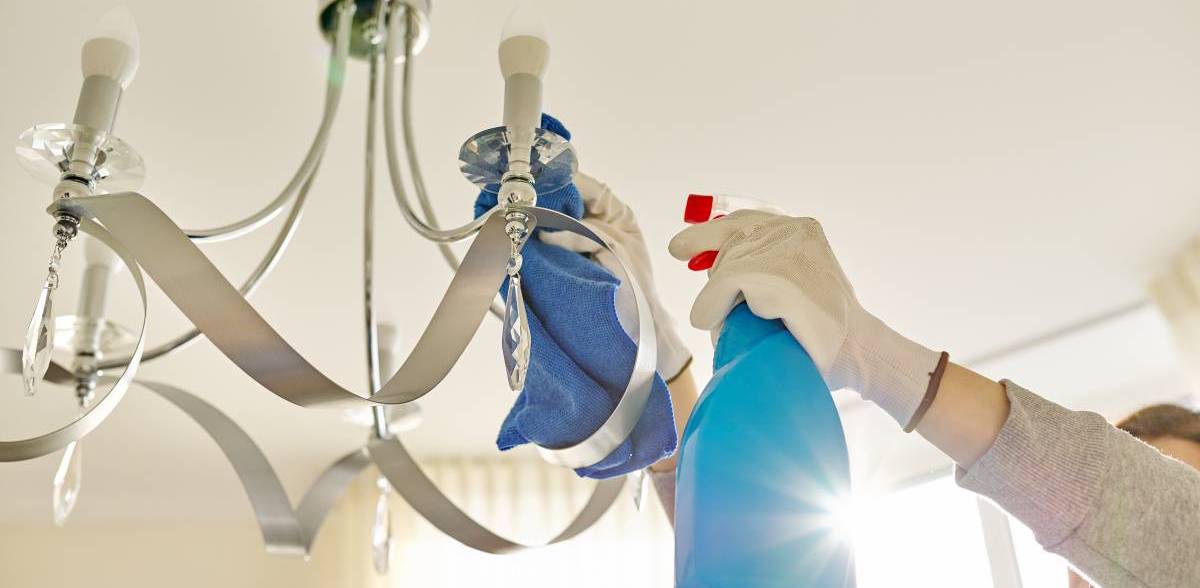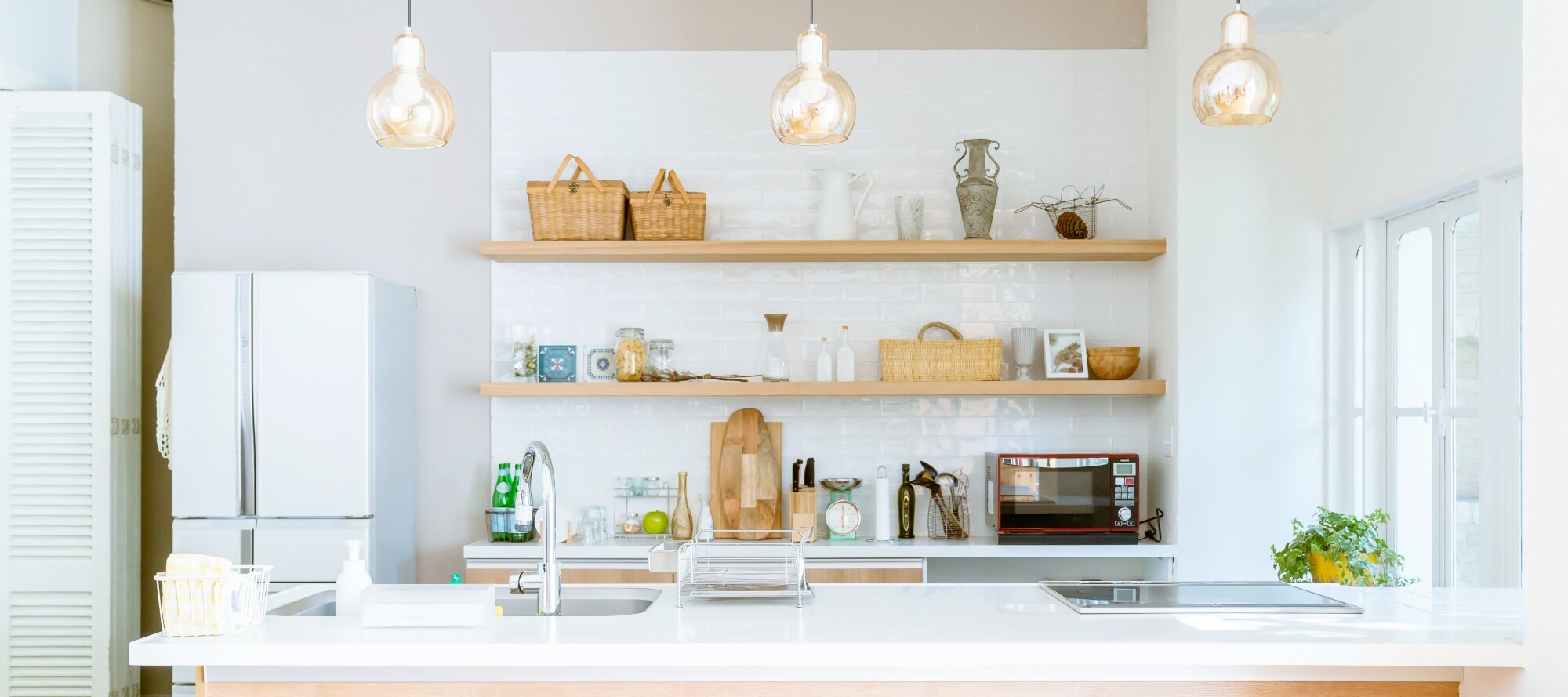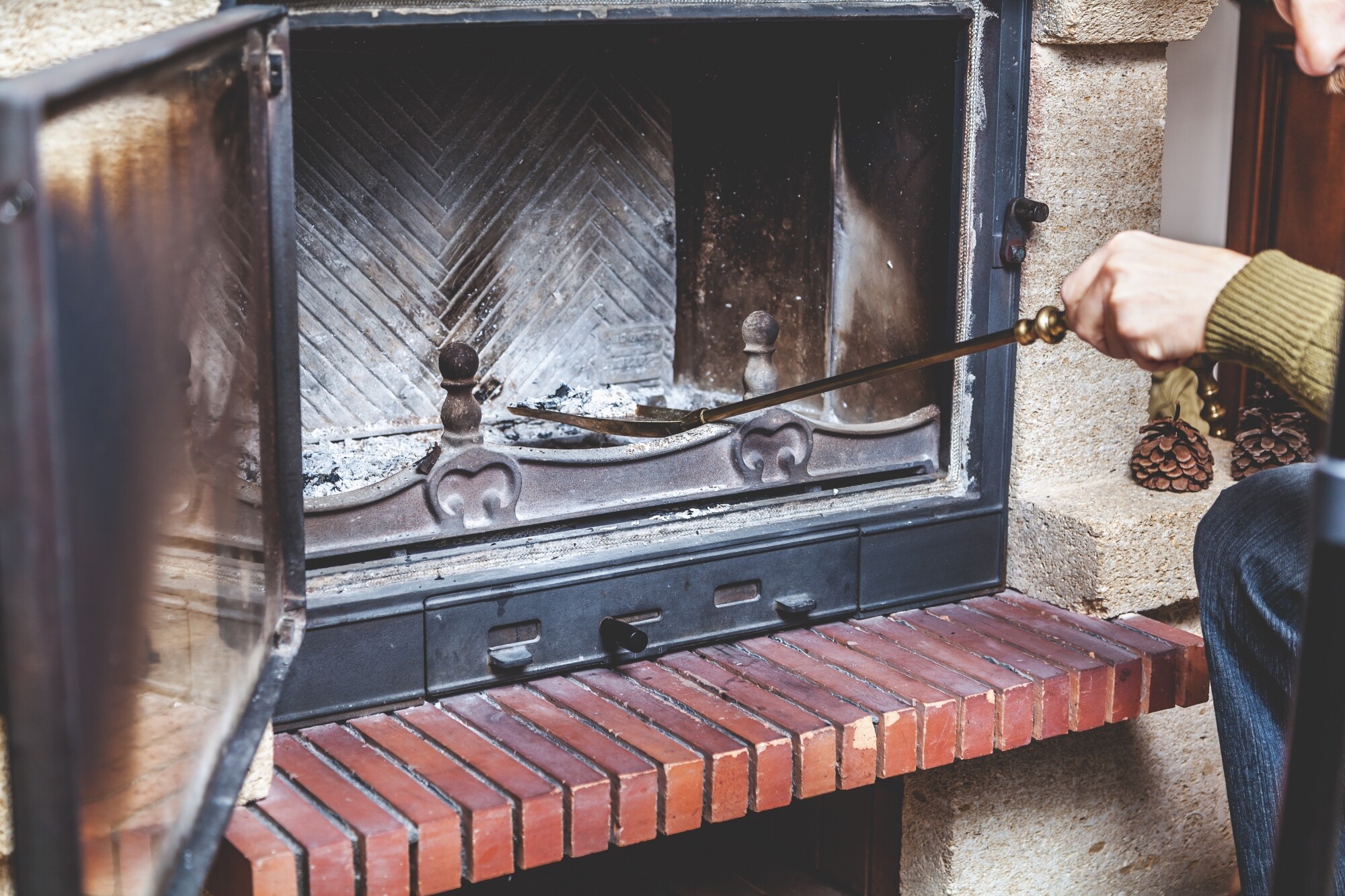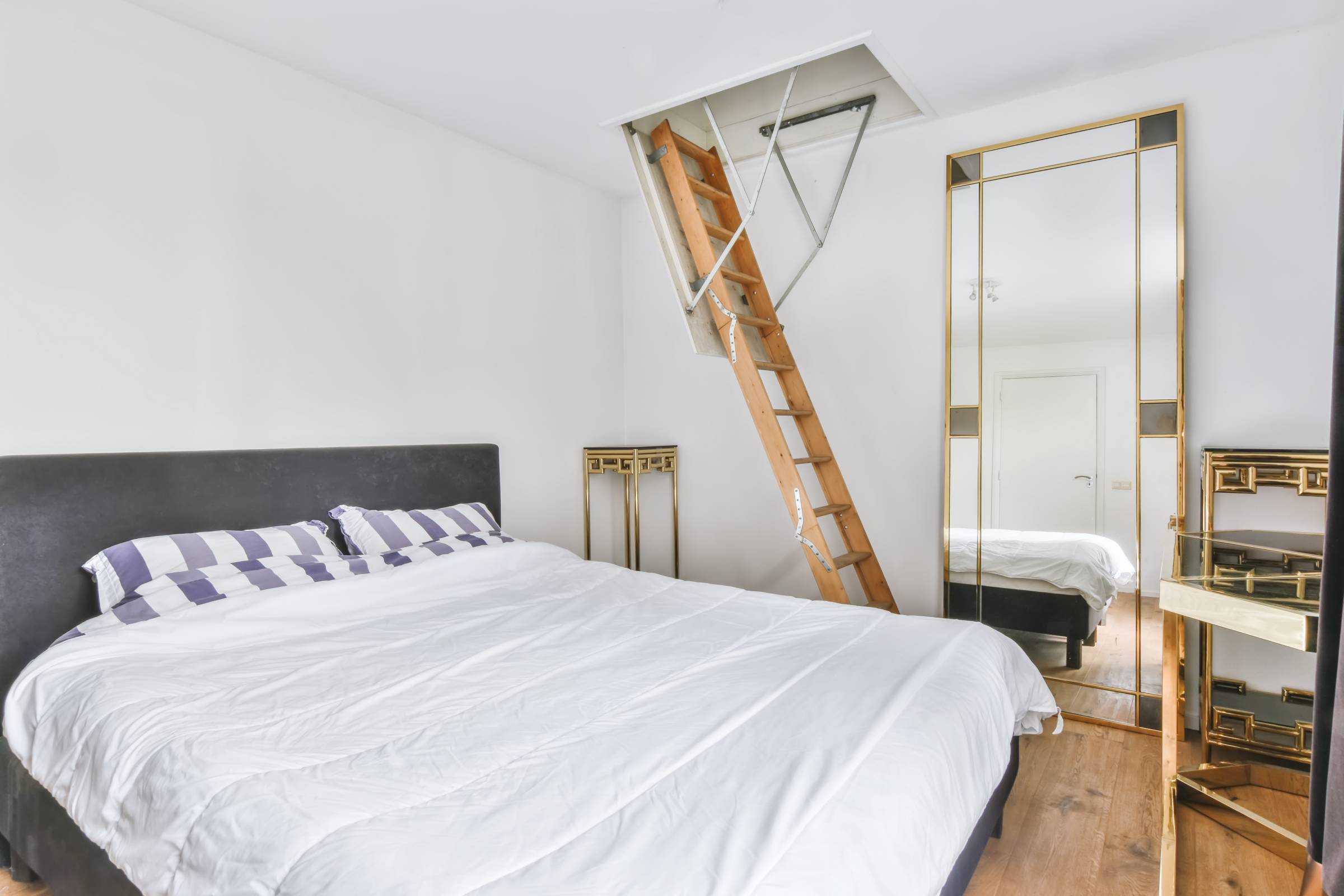- Home/
- Guides/
- House Cleaning/
- How to clean a house after COVID
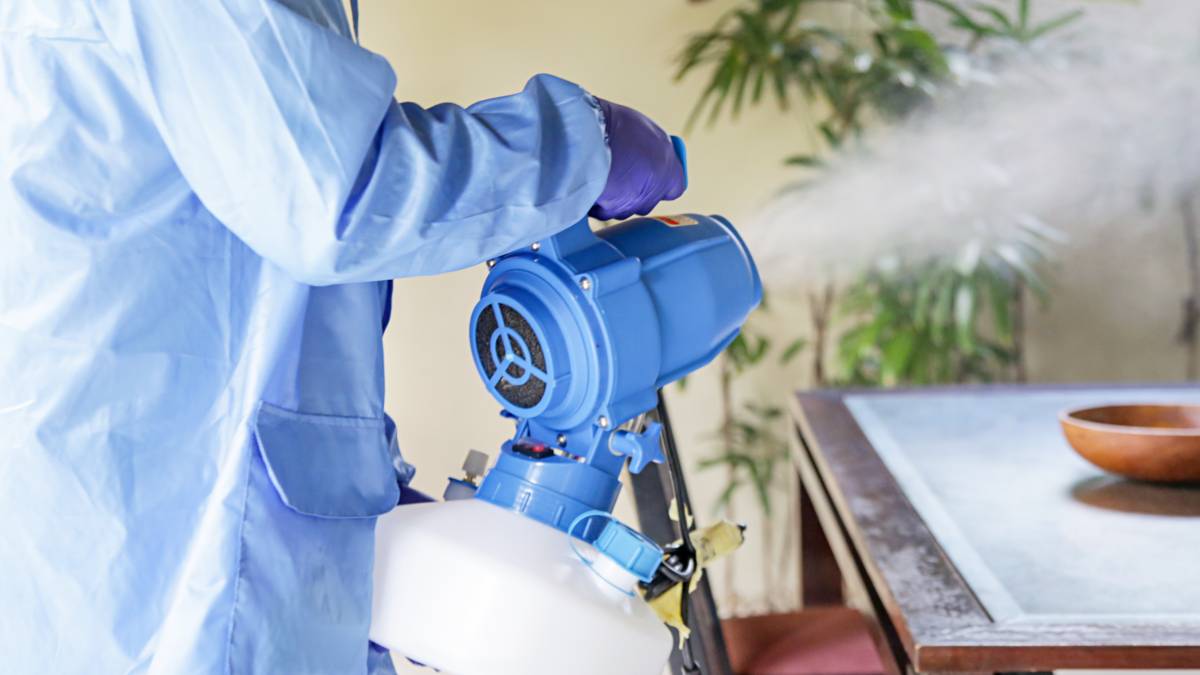
Last Updated on
The active cases of COVID-19 in the UK began rising early this year. You probably know people who recently come down with symptoms. After being exposed to COVID-19, you’ll need to disinfect your house or apartment to prevent the risk of viral transmission.
However, the task can get a bit stressful, especially if you don’t know where to start. With that in mind, we’ve gathered tips from reputable health organisations to create this guide on decontaminating or cleaning a house after recuperating from the coronavirus.
Cleaning your house after COVID-19: Why is it important?
Cleaning and disinfecting should both be done at home once the disease runs its course. Cleaning is the process of removing dirt and impurities from surfaces, while disinfecting refers to using chemicals to kill germs after cleaning. Both methods help reduce the risk of COVID-19 contamination and other viral respiratory illnesses at home.
Most people also ask if soap and water can clean a COVID-19-exposed surface. Thankfully, regular cleaning solutions made of soap reduce or already remove most virus particles on surfaces.
COVID cleaning checklist
The virus that causes COVID-19 doesn’t survive that long on surfaces, as it needs a host. However, it’s still safer to wait as long as possible, or at least 24 hours, before going to an area to clean and disinfect. Here’s a checklist you can refer to for quarantine and after-quarantine cleaning:
Tips for disinfecting rooms after isolation
Always wear a mask before cleaning.
Open the windows and use fans to help increase airflow.
If you need a cleaning spray, use a disinfectant with EPA-registered chemicals.
If the disinfectants on the list aren’t accessible, hydrogen peroxide or bleach solutions can be used instead.
Always follow the directions on the label of your disinfectant. The label also gives you preventive measures to keep you safe, including a list of personal protective equipment.
Clean first before disinfecting. Use soap or detergent to remove visible dirt and impurities. Then, use your disinfectant on the same spot or area to kill germs and viruses.
Don’t forget to clean and disinfect areas that might have blood, stool, or body fluids.
Wait for a few minutes. Give your disinfectant enough time to kill the germs!
After disinfecting, wash your hands with soap and water for 20-30 seconds. This is also a must, even if you wore gloves while cleaning.
Tips for using chemical disinfectants
Always follow the label directions to ensure the product is used effectively. This way, your time and effort won’t go to waste.
Adequate ventilation is a must so that harsh chemicals won’t suffocate you.
If you need to dilute the disinfectant, use water at room temperature.
Store your disinfectants out of reach of children and pets.
Avoid mixing chemicals in an attempt to increase their potency.
Don’t wipe or bathe people and pets with cleaning and disinfection products.
Tips for handling hazardous waste
Use a separate bin to collect the trash of infected people.
Don’t forget to use gloves when handling garbage bags.
Always wash your hands after waste disposal.
Tips for handling your cleaning tools or supplies
Dispose of your single-use safety supplies, such as rubber gloves, sponges, and wipes.
Clean and disinfect your mop head with hot water and soap. Wait for it to dry completely before reusing.
Empty your mop bucket and clean it thoroughly with detergent. Rinse, then disinfect.
Use the highest temperature setting when washing reusable cleaning cloths. Allow them to dry completely.
Prioritise high-touch surfaces

When cleaning and disinfecting, prioritize high-touch surfaces, such as door or window handles, light switches, kitchen countertops, bathroom surfaces, toilets and taps, touchscreen personal devices, and work tables.
Deep clean your house today!
Ultimately, getting sick or taking care of a COVID-19 patient can compromise home cleanliness. So get a fresh start after the illness through deep cleaning. If you dislike the idea of a DIY project, consider booking a Tasker for COVID cleaning services. It’s a fuss-free and cost-effective choice, especially for those who want to take a break after a stressful recovery.
FAQs
When a suspected COVID-19 case has been indoors, the virus can remain in the air for minutes to hours. The length of suspension depends on factors such as ventilation, temperature, and humidity.
The coronavirus can survive on non-porous surfaces, like stainless steel, plastic, and glass, for days to weeks. Indoors, the risk of surface transmission reduces after three days (72 hours) through routine cleaning and consistent hand hygiene.
While contaminated clothing isn’t considered a primary mode of viral transmission, studies show that the virus can survive on fabric for around eight hours. However, note that it still depends on the type of fabric. It’s best to handle dirty laundry safely by wearing gloves and washing your hands afterwards.
Find domestic house cleaners, fast
Find a House cleaner
Related articles
Related price guides
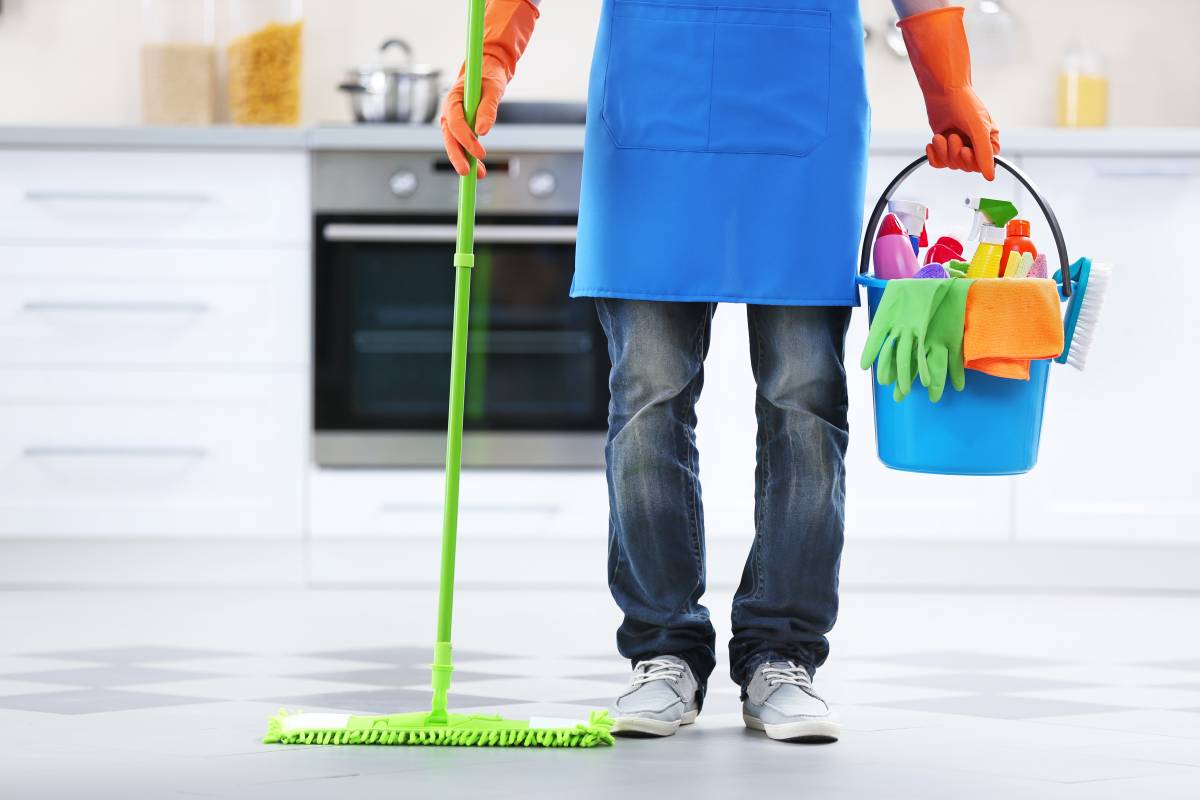
How much does house cleaning cost?
Read more
